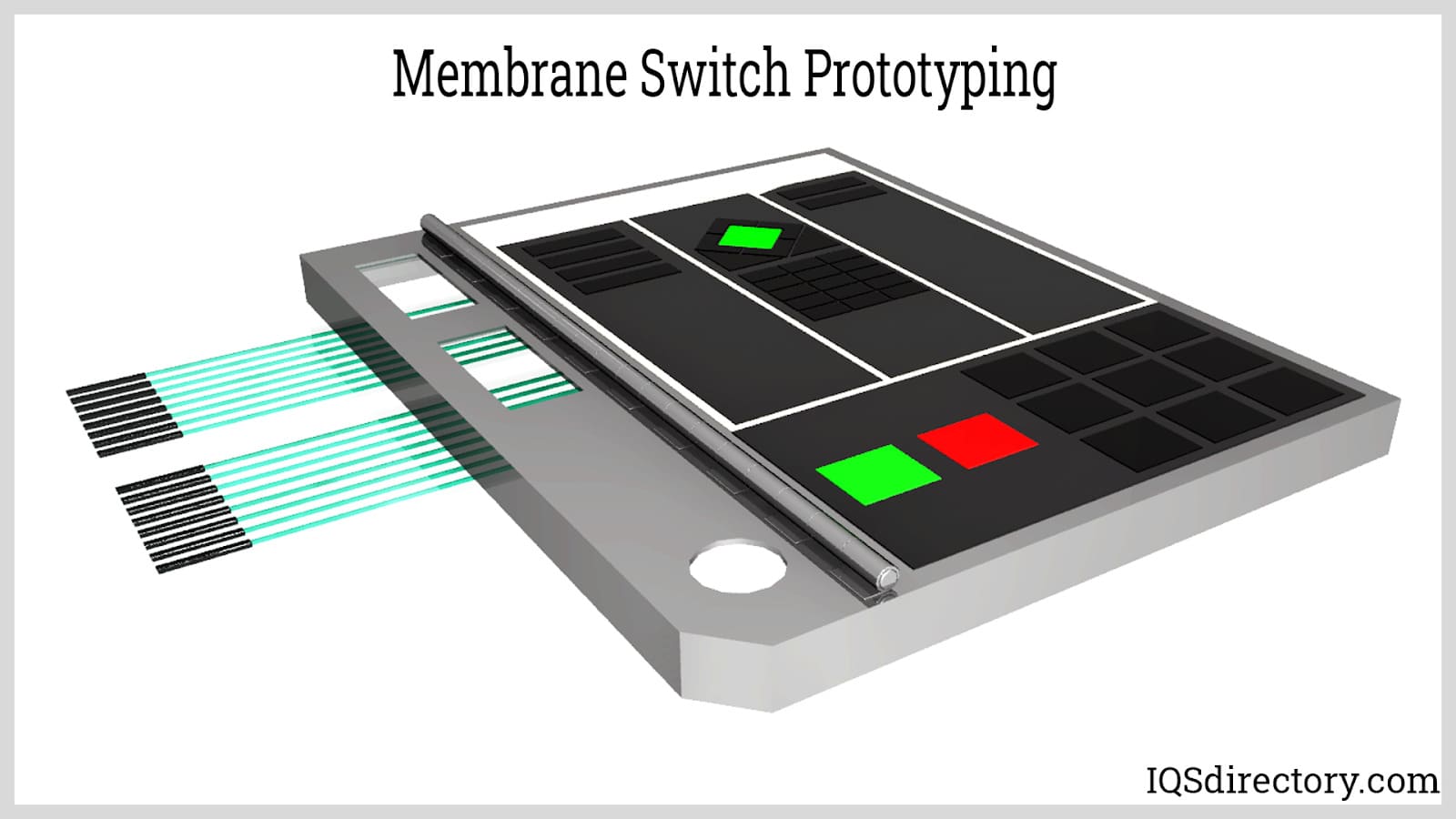The Role of a Membrane Switch in Modern Touch Interfaces and Controls
The Role of a Membrane Switch in Modern Touch Interfaces and Controls
Blog Article
How Membrane Layer Changes Add To the Longevity of Electronic Control Panels
Membrane buttons play an important role in enhancing the sturdiness of electronic control panels, mainly via their multi-layered construction which offers reliable protection versus ecological aspects such as dampness and dirt. The lack of moving parts considerably minimizes the chance of mechanical failings, making membrane layer changes suitable for requiring applications.
Interpretation of Membrane Buttons

Membrane switches are made to be thin and light-weight, making them ideal for applications where space is limited. They can be produced in different forms, dimensions, and shades, using adaptability in design that fulfills aesthetic and functional needs. Additionally, membrane layer buttons can include numerous technologies, such as tactile feedback and LED indicators, boosting individual experience.
Because of their building and construction, membrane buttons are commonly immune to dust, moisture, and general wear, adding to their resilience sought after atmospheres. Their seamless design not only facilitates very easy cleaning yet additionally minimizes the danger of mechanical failing, making them a recommended option for makers looking for dependable interface in their electronic control board.
Security Versus Environmental Elements
The layout of membrane layer switches naturally supplies a level of protection versus various environmental elements, which is crucial for maintaining functionality in challenging conditions - Membrane Switch. These switches are typically constructed with layers of adaptable products that secure interior parts from dampness, dust, and pollutants. By enveloping the circuitry, membrane layer switches over decrease the threat of short circuits and corrosion, which can significantly hinder performance
In addition, using robust adhesives and sealants throughout production boosts their resistance to environmental challenges. Membrane layer switches can sustain exposure to chemicals and solvents, making them ideal for markets such as food processing and medical care, where hygiene and sanitation are critical. Their smooth surface layout also prevents the accumulation of dirt and bacteria, facilitating less complicated cleaning and upkeep.
Temperature variations are another environmental concern, and membrane buttons are engineered to function efficiently throughout a variety of temperatures (Membrane Switch). This flexibility ensures that control panels continue to be operational in numerous settings, from industrial settings to customer electronics
Influence On User Communication
Customer interaction with digital control board is significantly influenced by the style and performance of membrane buttons. These buttons supply a tactile interface that improves the overall user experience, permitting instinctive navigation and control. Their receptive nature guarantees that users get prompt responses upon activation, which is important for jobs requiring accuracy and performance.
In addition, the smooth surface area of membrane changes facilitates very easy cleansing and upkeep, promoting customer self-confidence in the integrity of the interface. This sanitation is specifically essential in atmospheres where health is critical, such as medical or food processing setups. In addition, the compact and lightweight design of membrane layer changes adds to the aesthetic charm of control panels, urging customer involvement with a modern and streamlined look.
Furthermore, the integration of visual components, such as printed symbols and backlighting, assists individuals rapidly identify functions, lowering the learning curve related to brand-new devices. Because of this, users can run devices better, causing enhanced performance and fulfillment. In summary, membrane switches play an essential role in boosting user interaction by combining functionality, aesthetics, and convenience of usage, eventually bring about enhanced functional effectiveness.
Layout Flexibility and Customization
Design versatility additional hints and modification are important facets of membrane layer buttons, making it possible for manufacturers to customize electronic control panels to details applications and customer needs. This versatility permits the combination of different design aspects, such as shades, graphics, and structures, which can boost the visual appeal and user engagement of the control panel.
Membrane switches can be customized in shapes and size, suiting a vast array of gadgets and applications, from industrial equipment to customer electronics. This convenience guarantees that makers can develop user-friendly user interfaces that line up with user expectations and functional requirements. Additionally, the capability to integrate special attributes such as backlighting or responsive comments even more boosts use, enabling for a more interactive experience.
In addition, the production procedure for membrane switches over sustains the fast prototyping of styles, YOURURL.com allowing suppliers to iterate and refine their ideas promptly. This capacity not just accelerates the advancement timeline yet additionally ensures that the end product satisfies certain functional and visual requirements.

Cost-Effectiveness and Long Life
Cost-effectiveness and longevity are significant benefits of membrane switches, making them an eye-catching alternative for producers and end-users alike. These buttons are normally more economical to produce than standard mechanical buttons, mainly as a result of their streamlined manufacturing processes and the reduced number of components needed. This price benefit expands not only to initial manufacturing but additionally to long-lasting functional expenditures, as membrane buttons often require less maintenance and have a reduced failure rate.
Additionally, the durability of membrane layer switches over adds to their overall value. Constructed from long lasting products, they are immune to ecological elements such as dampness, dirt, and chemicals, which can bring about early wear in other switch types. The lack of moving components minimizes mechanical failure, allowing membrane layer switches to maintain functionality over extended periods.
This toughness is especially helpful in applications needing regular performance under requiring problems, such as clinical gadgets and commercial devices. Ultimately, the combination of cost-effectiveness and durability makes membrane layer switches over an economically feasible option for suppliers, providing dependable solutions that withstand browse around this web-site the examination of time while optimizing financial considerations.
Final Thought
In final thought, membrane layer switches substantially enhance the longevity of digital control panels with their durable construction and safety features - Membrane Switch. Overall, membrane layer switches over stand for a trustworthy and economical choice for boosting the durability and functionality of electronic control systems.
Report this page